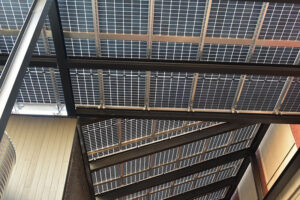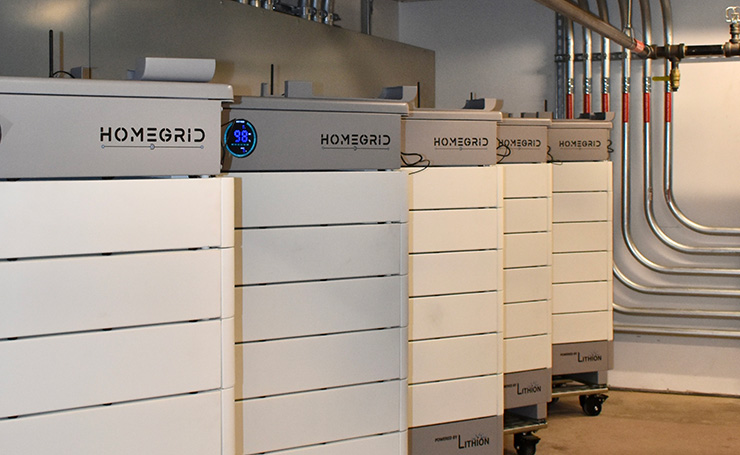LBC Petal – Energy
The energy petal of the Living Building Challenge seeks to minimize reliance on fossil fuels while promoting the use of clean energy. It requires that 105% of the building’s energy demands be produced on site from a renewable resource.

To power the Stanley Center’s building, we have installed 340 solar panels that consume 8,100 feet of our roof and canopy. These 340 solar panels are expected to generate 186,000 kWh of energy annually, producing over 110% of our energy needs. For our building to function, the solar panels provide energy to our lighting, heating, cooling, and power systems. The building uses four variable refrigerant flow systems that utilize an energy recovery unit to heat and cool the building. They are paired with a Bousquet Super Block energy exchanger that is up to 95% efficient for ventilation. This system allows each office and occupiable space to be individually adjusted for temperature.
We Partnered with GAF Roofing to ensure high energy efficiency while including responsible materials:
Our habitable zone accommodates 75% of our building’s full-time occupants by providing access to potable water, showers, restrooms, an emergency food supply, and space for sleeping. In the event of a natural disaster, a 172 kWh backup battery system is available to supply the habitable zone of our building with power for three to four days. The system supplies lighting, heating, cooling, and power for cooking and the ability to charge devices. Our energy systems suggest an Energy Use Intensity score of 26.3 kBtu. This score is significantly lower compared to buildings of similar size, which typically receive a score between 35-70 kBtu.

To minimize thermal bridging when indoor air temperature is impacted by outside conditions, the exterior rain screen and 5 inches of mineral wool were added over the pre-existing brick structure. Along with the brick, approximately 95% of the previous building mass was reused. By renovating the old library, two-thirds of the embodied carbon that would have been used in the new construction of a similar-sized building was not needed. This is equivalent to the carbon capture and storage capacity of 560,000 trees.
Learn more from Neumann Monson Architects about the seven petals of the Living Building Challenge and how to prepare for solar power on a building project.
